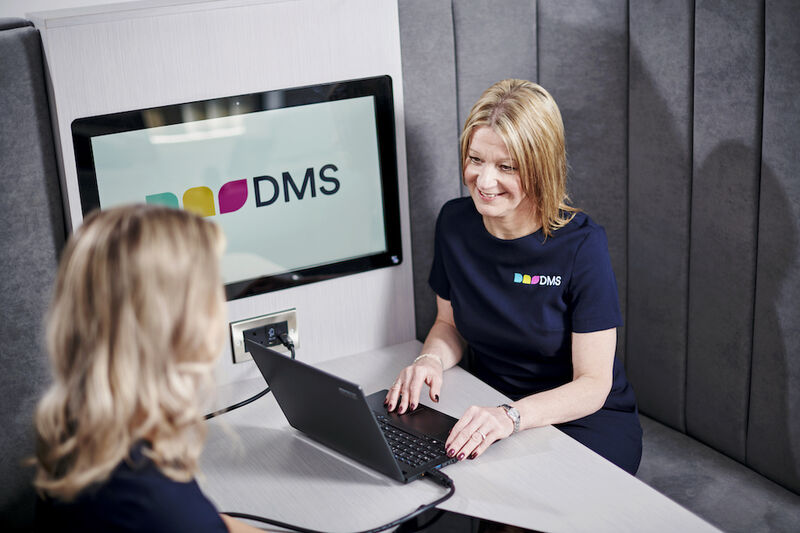Since the coronavirus crisis, businesses and places of education such as schools, colleges and universities have had to make significant changes to the way in which they work with many attending classes and meetings remotely as opposed to physically attending class in order to comply with the government’s covid regulations.
As the crisis comes to an end, lots of schools have decided to adopt a blended learning approach which combines both online education with traditional classroom based learning. In this guide, we’re going to be taking a look at how blended learning can benefit student learning and how DMS can facilitate it.
How Does Blended Learning Benefit Schools?
Safer Learning Environment
Although COVID-19 restrictions are coming to an end, many institutions are continuing to practice social distancing and conducting more regular cleaning and disinfecting of classrooms. By having students complete most of their coursework at home and limiting the amount of in-person attendance required, there will be far fewer students on site at any one time, reducing the risk of coronavirus transmission.
Blended learning also allows schools to be better prepared in the event of a COVID-19 outbreak in their class as they can continue to attend classes remotely until it is safe to return, meaning they aren’t missing out on any valuable learning time whilst self isolating.
Increase Student Engagement
Studies have found that blended learning increases engagement by providing different opportunities through digital engagement tools. For example students who ordinarily don’t feel comfortable sharing or speaking in front of their class in-person have more opportunities to engage in different ways, by typing in a chat, sharing their screen or using action notifications to give answers e.g. thumbs up for yes, thumbs down for no and middle thumbs for unsure.
Blended learning also allows more opportunities for those with different styles of learning to have their needs met. For example, some students learn better visually, some prefer auditory learning whilst others require kinaesthetic learning. By combining in-class teaching with remote learning, students can benefit from a range of different learning styles.
Efficient Use of Teachers’ Time
Traditional in-person learning tends to involve lots of work done outside of learning time when teachers are completing tasks such as printing out and dividing worksheets, taking a physical register and preparing the classroom both before and after each lesson. Through the use of blended learning, much of this can be automated when remote learning, meaning teachers can spend more time on more important tasks such as lesson planning and marking student’s work.
Reduce Distraction
One of the biggest challenges a teacher faces is keeping the attention of their students who often become distracted or are too busy chatting to their friends. Having to ask students to stop distracting each other and focus on the lesson at hand can waste lots of valuable learning time and can be particularly frustrating for those students who wish to get on with the lesson without any interruptions from others.
By implementing blended learning, students are less likely to be chatting to each other during remote sessions as it isn’t as simple as whispering to the person next to them and if everyone was to do it, nobody would be able to hear anything. By using a ‘hands up’ button that allows the teacher to unmute a student with their hand raised, it also discourages those who tend to shout out in class, creating fairer opportunities for children to take turns answering questions.
Access More Students
Career college students and apprentices are often required to attend a certain number of lessons alongside their jobs in order to gain theoretical knowledge alongside their practical skills in the workplace.
Prospective students looking to enroll will be looking for courses that offer flexibility, meaning schools and colleges that utilise blended learning will be more attractive than those which do not. It also means that more people from around the country can enroll when the majority of learning is done remotely and they don’t have to commute to the lesson every time.
How DMS Can Help Facilitate Blended Learning
Built-in cameras and microphones on teachers’ computers can often be low quality, leading to miscommunication and limited learning. At DMS, we offer bespoke audio visual solutions to suit your needs such as pan/tilt/zoom cameras, high quality microphones and sound enhancement which provides better video clarity and a more seamless learning experience.
Our service is a complete package; from an in-depth consultation to establish your precise needs, installation and complete technical guidance and maintenance, you can rest assured knowing all your AV needs will be taken care of with DMS to support your blended learning.
Our DMS One Bundles allow you to use the latest technology, such as laptops or tablets for the whole classroom with one easy-to-manage contract.
Implement Blended Learning with DMS
Get in touch with our team of experts at DMS to discuss how our services can facilitate your blended learning today.









